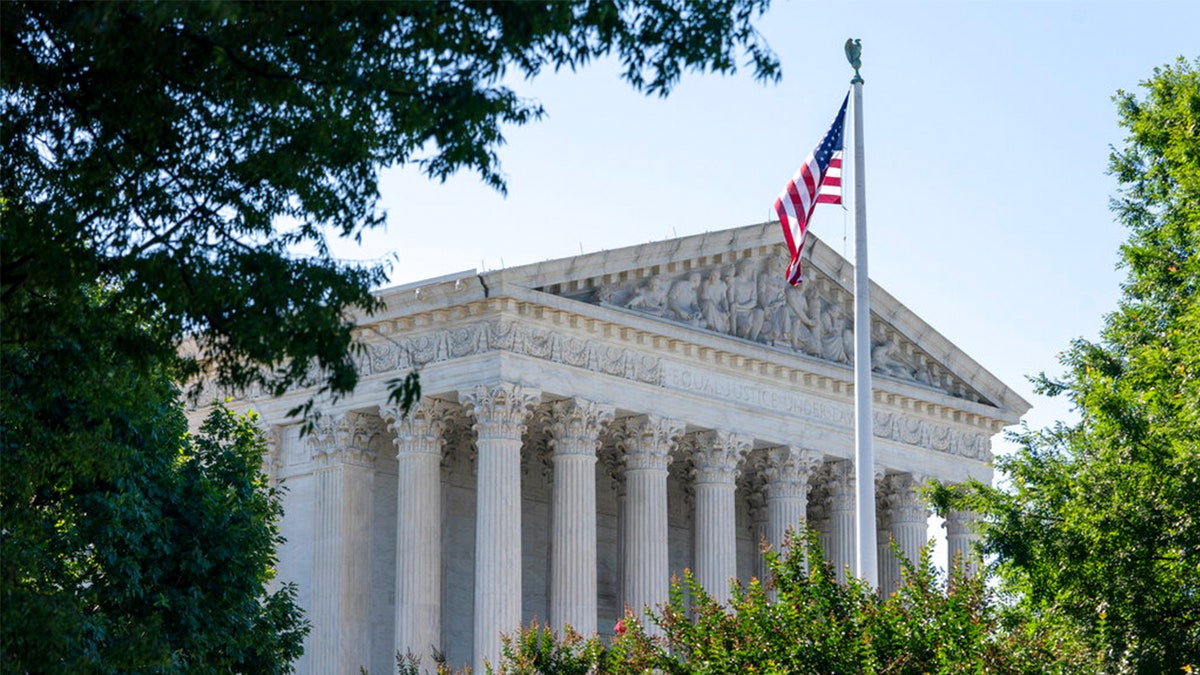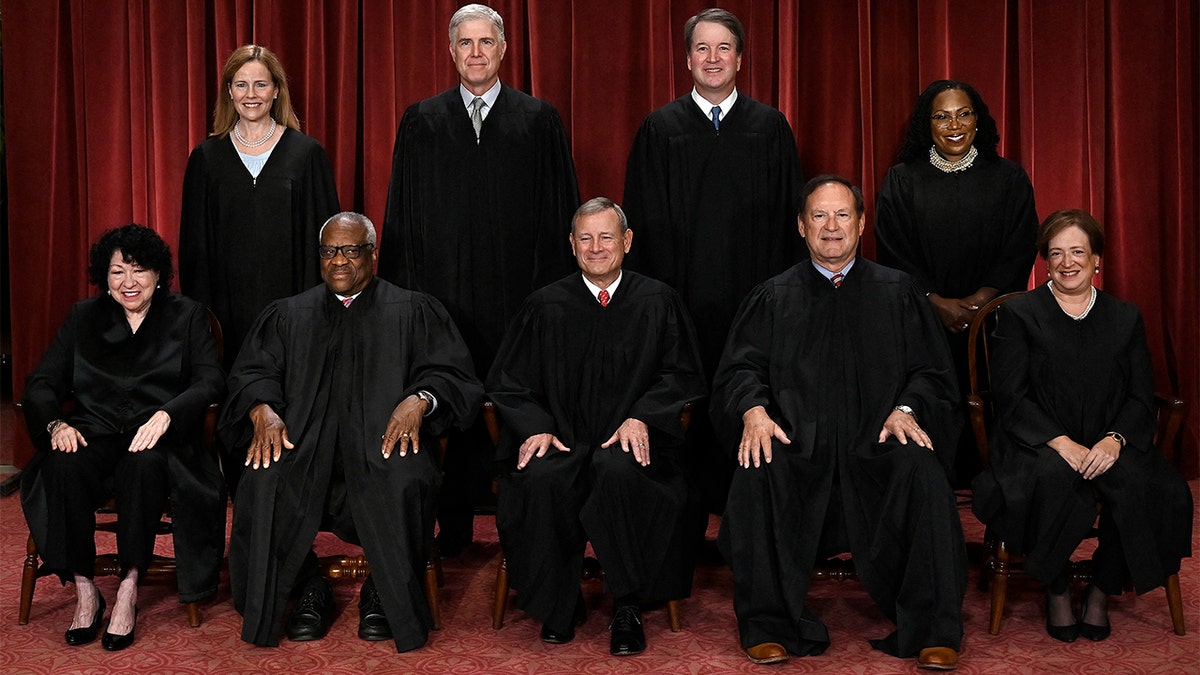The Supreme Court offered divided thoughts and a measure of confusion on Wednesday over whether the federal government can ban so-called bump stocks, a device that increases the firepower of automatic weapons.
The case, Garland v. Cargill, presents whether a “bump stock” device is a “machine gun” as defined by federal law because it is designed and intended for use in converting a rifle into a weapon that fires “automatically more than one shot… by a single function of the trigger.”
After a 2017 mass shooting in Las Vegas that left 60 people dead and 500 more wounded, the Bureau of Alcohol, Tobacco, Firearms and Explosives (ATF) issued an interpretive rule concluding that “bump stocks” are machine guns.
The Trump administration initiated a ban on the devices — reversing earlier regulations — and President Biden’s Justice Department is now defending it in court.

The Supreme Court. (AP Photo/Jacquelyn Martin)
Michael Cargill, owner of Central Texas Gun Works, sued the government after he was forced to surrender several “bump stocks” under the ATF’s rule. He says the agency overstepped its administrative authority to impose a ban, absent any congressional action.
“It really goes back to… freedom. And it goes back to just the basics of something that my customers and myself legally purchase. The government should not have that power, that authority in an administrative agency… to come back and ban that. You know, something that Congress has not banned. That’s going to be a job that’s reserved for Congress,” Cargill said in an interview with Fox News Digital.
The conservative high court majority has been generally supportive of the Second Amendment in recent years, and several justices suggested the government here overstepped its power.
But the nearly 90 minutes of oral arguments signaled the nine-member bench viewed the case as more about regulatory authority and less about expanded gun rights.
The justices’ questions were focused mainly on exactly how bump stocks work, and their functional effect.
“I can certainly understand why these items should be made illegal, but we’re dealing with a statute that was enacted in the 1930s, and through many administrations, the government took the position that these bump stocks are not machine guns,” said Justice Neil Gorsuch. “And then you adopted an interpretive rule, not even a legislative rule, saying otherwise that would render between a quarter of a million and a half million people federal felons.”
Justice Samuel Alito called that “disturbing.”
“These are the kind of weapons that Congress was intending to prohibit because of the damage they cause,” said Justice Ketanji Brown Jackson. “It’s really not about the operation of the thing. It’s about what it can achieve, what it’s being used for… The function of this trigger is to cause this kind of damage, 800 rounds a second or whatever.”
A bump stock is an attachment that replaces a semi-automatic weapon’s standard stock, the part of the long weapon that rests on the shoulder.
TEXAS GUN STORE OWNER SAYS SUPREME COURT SHOULD LIMIT GOVERNMENT ‘POWER’ IN ‘BUMP STOCK’ BAN CASE

A bump stock is displayed in Harrisonburg, Virginia, on March 15, 2019. (AP Photo/Steve Helber, File)
As the shooter applies forward thrust on the barrel, the device harnesses the recoil energy so that the trigger will “bump” against the stationary finger, which then allows another round to be fired. The effect is more rapid shots than with a standard stock.
Bump stocks came into circulation early this century, one of a number of devices that can be attached to semi-automatic weapons.
The carnage at the Route 91 Harvest Music Festival in Nevada — where the gunman fired more than a thousand rounds from 14 semi-automatic rifles outfitted with bump stocks — prompted the Trump administration to quickly ban them.
GUN OWNERS DUNK ON SHAQ FOR SPONSORING FIREARM BUYBACK EVENT IN RED STATE: ‘ABSOLUTELY NOT’

The Supreme Court Justices pose for an official photo. (Olivier Douliery/AFP via Getty Images)
Before that, the ATF for more than a decade had determined the devices did not convert them into machine guns, which have been illegal to own for nearly a century.
The ATF says more than a half-million bump stocks were in circulation when the federal ban came into effect five years ago, requiring them to be turned in or destroyed.
The focus of arguments came down to a technical inquiry into how gun triggers are enhanced by the addition of a bump stock. Several on the court admitted watching videos of bump stocks in a simulated environment, as part of the briefs submitted in the case.
Both sides presented radically different ideas of just how these accessories work.
The government told the justices bump stocks allow a gun user to fire “automatically more than one shot, without manual reloading, by a single function of the trigger.”
Lawyers for the gun dealer argued that despite enhancing the firepower, the effect was still a manual, not an automatic function.
“The entire point of this device is that you exert forward pressure and you have your finger on the trigger, and then a torrent of bullets shoots out,” said Justice Elena Kagan. “So I don’t understand why it’s any different from pushing a button and holding the trigger.”
After attorney Jonathan Mitchell suggested bump stocks might help someone with a medical condition, Justice Sonia Sotomayor asked, “Why would even a person with arthritis, why would Congress think they needed to shoot 400 to 7- or 800 rounds of ammunition under any circumstance?”
But other questions from the bench went back to what legislators have not done on this issue.
CLICK HERE TO GET THE FOX NEWS APP
“Intuitively I am entirely sympathetic to your argument, and it seems it’s functioning like a machine gun would,” said Justice Amy Coney Barrett, “but looking at that definition, the question is, why didn’t Congress pass that legislation to cover this more clearly?”
The technical analysis undertaken during arguments was not without its hiccups.
“This is totally confusing,” said Alito at one point. Jackson used the same word on several other occasions.
“Now I’m completely lost,” added Sotomayor at one point.
Cargill, an Army veteran, is being defended in court by the New Civil Liberties Alliance.
“If a federal agency can issue a rule that makes people felons for owning a device the agency had repeatedly and consistently approved as lawful for more than a decade, then everyone’s liberty is truly in jeopardy,” said Mark Chenoweth, the group’s president.
Supporters of the ban say it saves lives.
“Fully automatic firearms — and conversion devices — are already heavily regulated under federal law, with good reason,” said Esther Sanchez-Gomez, litigation director at the Giffords Law Center. “ATF’s classification of bump stocks as machine guns is simply common sense, and in line with congressional intent to regulate workarounds to the machine gun regulations.”
A ruling is due by early summer.